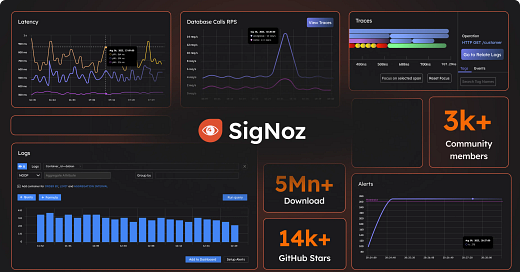Have you ever used a piece of software that just wouldn’t work, no matter how many times you tried? Maybe it was a mobile app that kept crashing, or a website that wouldn’t load. As a consumer, it’s frustrating when software fails, but for engineering teams it’s a looming dark cloud that hangs over them as they build and maintain applications.
Observability is like a superpower that allows engineers to see inside their application + infrastructure and quickly identify and fix issues. It’s a critical aspect of modern software development. However, many engineering teams are fed up with the current offerings in market like Datadog, New Relic, and Splunk.
As software architectures become increasingly complex, observability has become more critical than ever. With the widespread adoption of microservices, cloud computing, and distributed architectures like Kubernetes, it's no longer enough to simply monitor system performance and logs.
One of the main problems is that observability products often lack a unified, full-stack view of the entire system. This makes it difficult for developers to identify the root cause of the issues and can lead to a reactive posture, creating friction for customers and engineers. Although there are open-source tools like Prometheus & Jaeger, they don’t provide a great user experience as SaaS products do. It takes lots of time and effort to get them working, figuring out the long-term storage, etc. And if you want metrics and traces, it’s not possible as Prometheus metrics & Jaeger traces have different formats. Having to stitch together multiple tools for a distributed architecture is not sufficient, the market needs something better.
Introducing Signoz, observability for microservice applications.
Signoz is an extremely popular open source APM tool used to monitor applications and troubleshoot problems. A single tool for all your observability
needs - APM, logs, metrics, exceptions, alerts, and dashboards powered by a powerful query builder.
Signoz is built on the following components:
OpenTelemetry Collector: Collects telemetry data from your services and applications.
ClickHouse: An open-source, high performance columnar OLAP database management system.
Query Service: The interface between the front-end and ClickHouse
Frontend: The user interface, built in ReactJS and TypeScript.
Legacy products in observability or logs are built on custom frameworks, are not interoperable, and are not built for micro services-first environments. By collecting and correlating data from different components of a system, Signoz enables users to understand the flow of requests and identify bottlenecks or errors. Furthermore, since every company is a software company, observability of how your software is performing is critical.
Despite the observability market being valued at $62B1 by 2026, Signoz the believes that observability is still in the early stages. When Pranay Prateek & Ankit Nayan started SigNoz in 2021, there was a considerable difference between the observability solutions available in open source and what was available in closed source products like DataDog, NewRelic. As developers, they wanted much better integrated tooling to be available in open source - Since no projected existed, they decided to build SigNoz.
With 14K stars on GitHub, 5M+ Docker image downloads, and 100+ amazing contributors, Signoz seems to have resonated with the community 🚀
I’m thrilled to announce my investment into Signoz. Signoz has raised a $6.5M Seed round led by Signal Fire with participation from Uncorrelated Ventures and Alumni Ventures.
https://markets.businessinsider.com/news/stocks/could-datadog-s-tam-reach-62b-%E2%80%94-maybe-70b-yes-but-it-depends-on-this-analyst-1032044553






